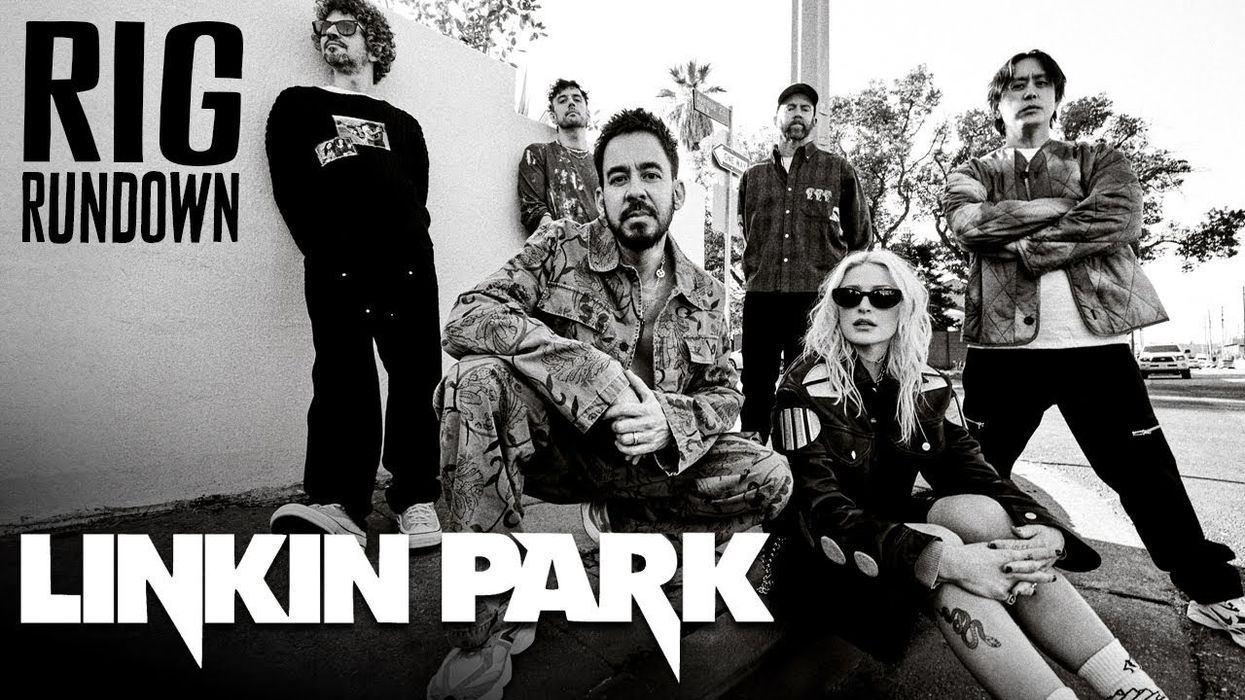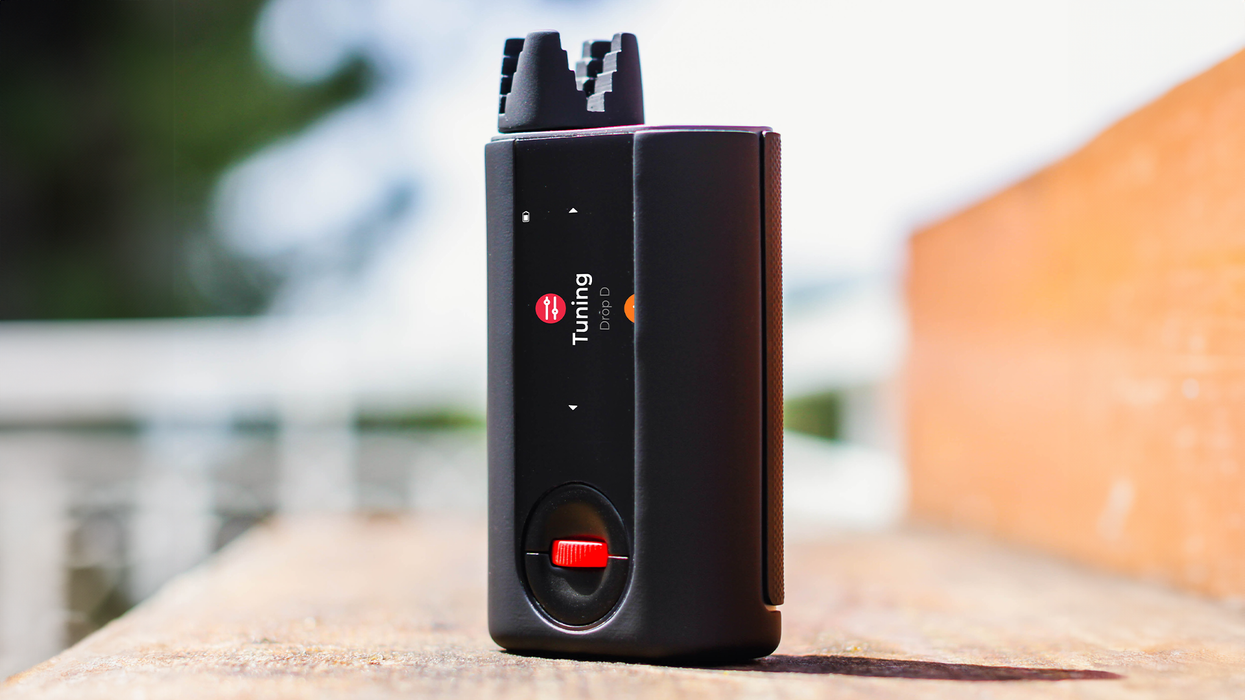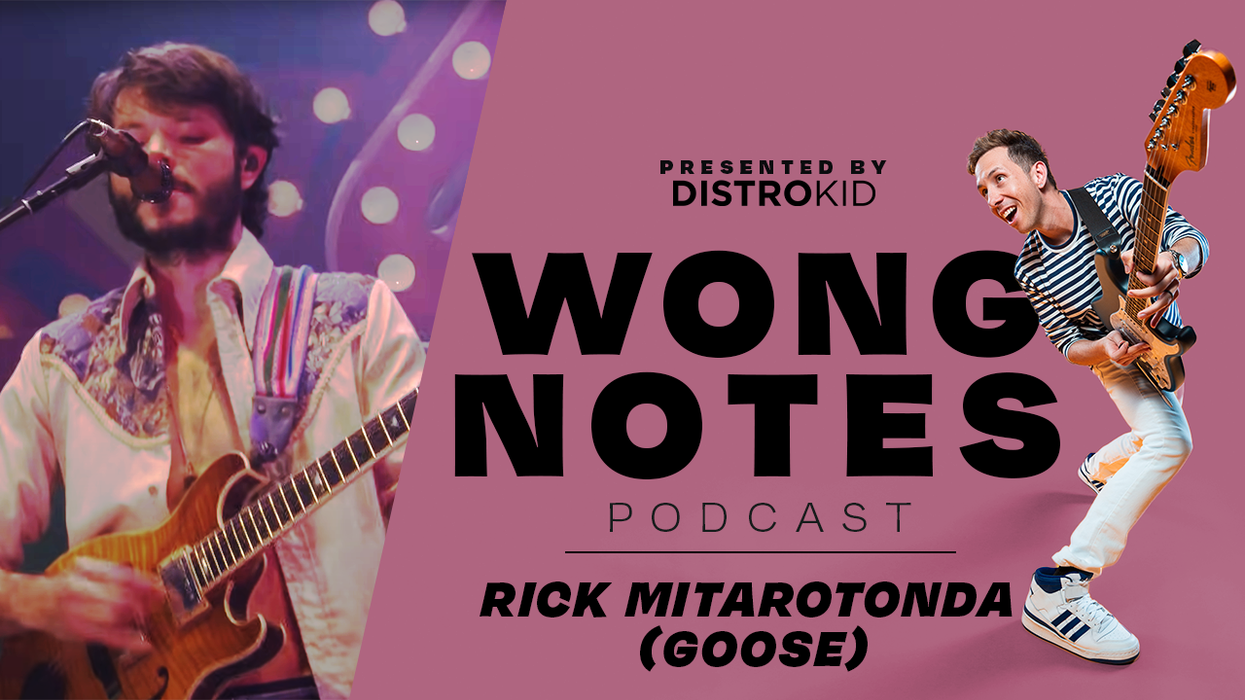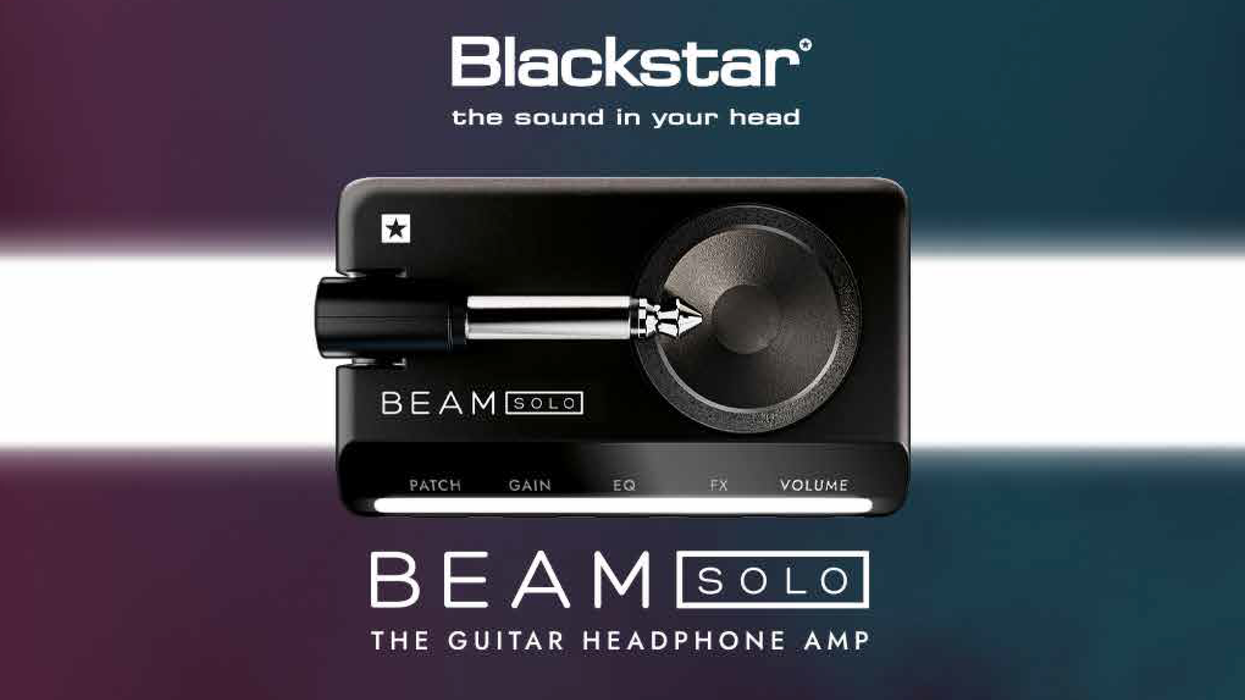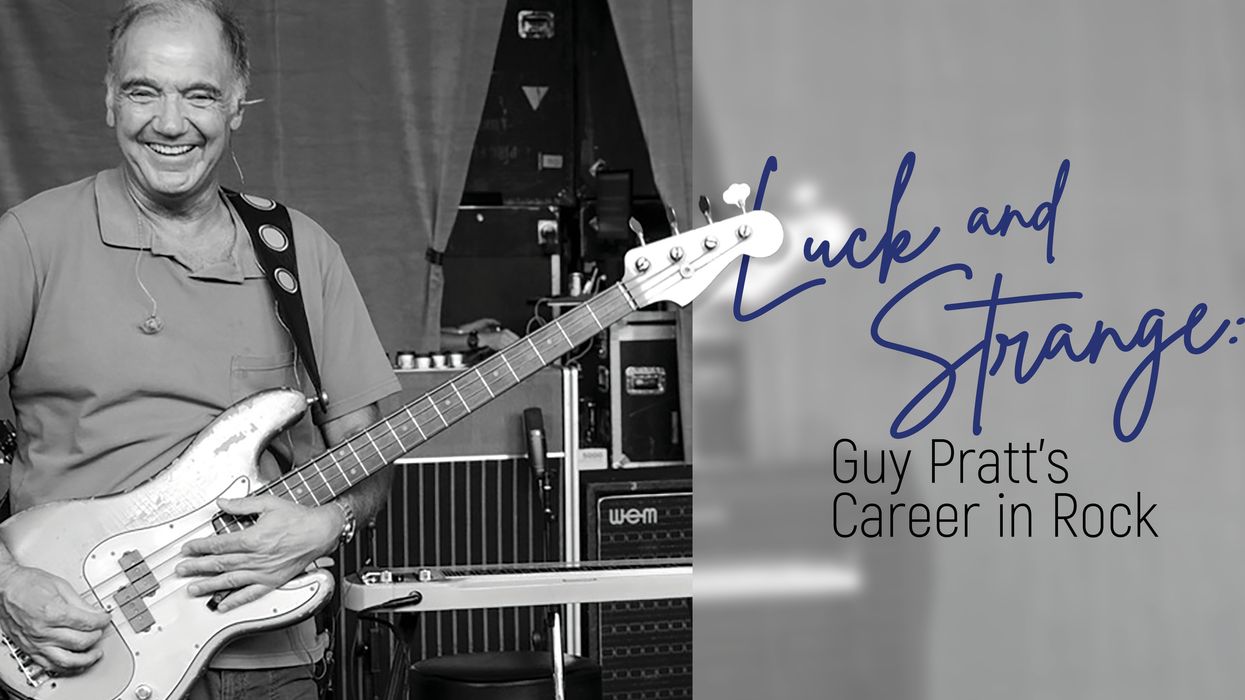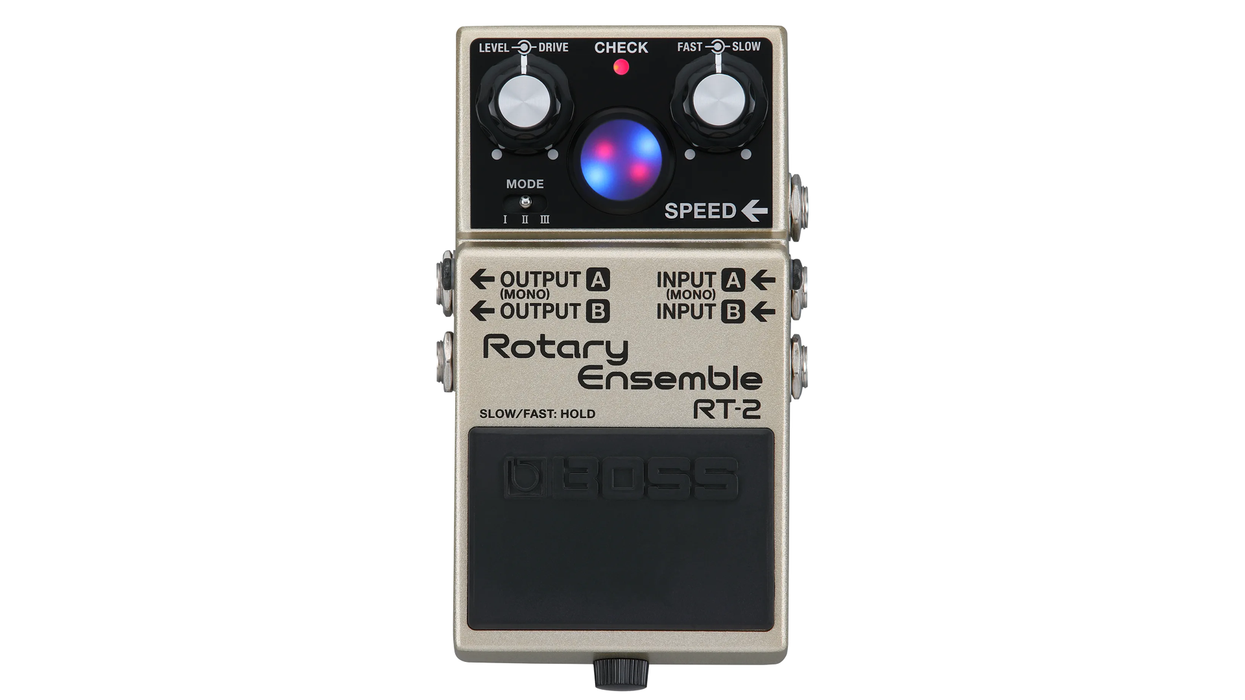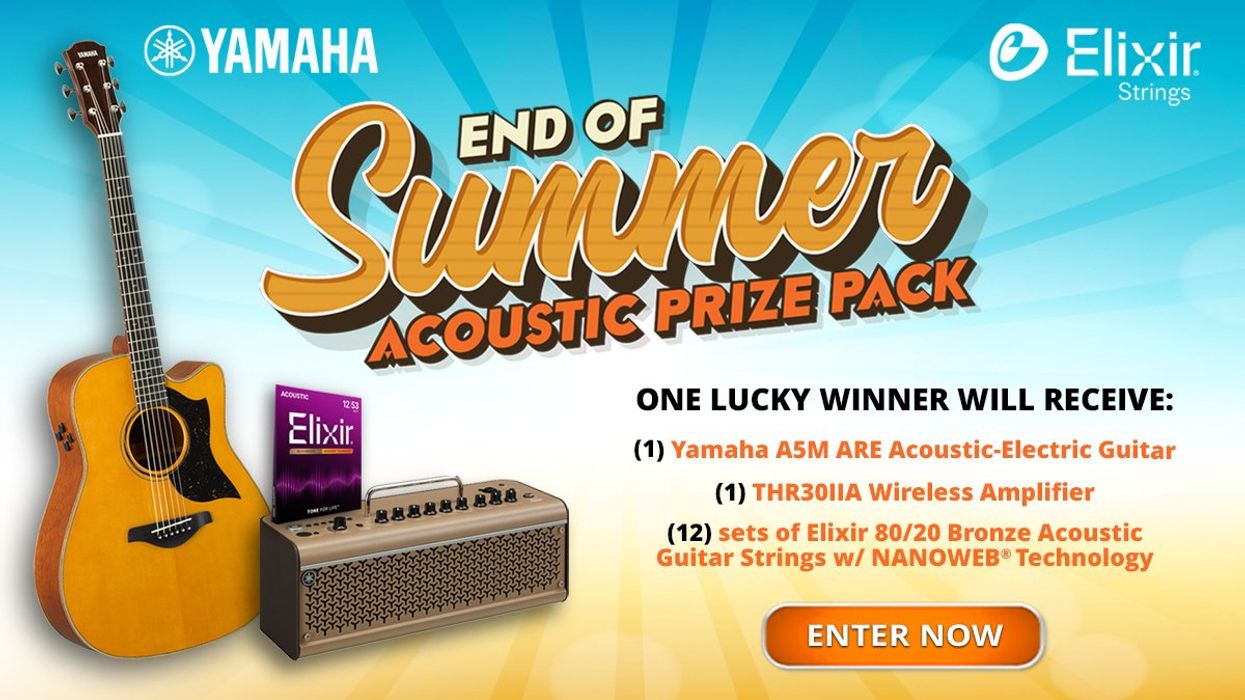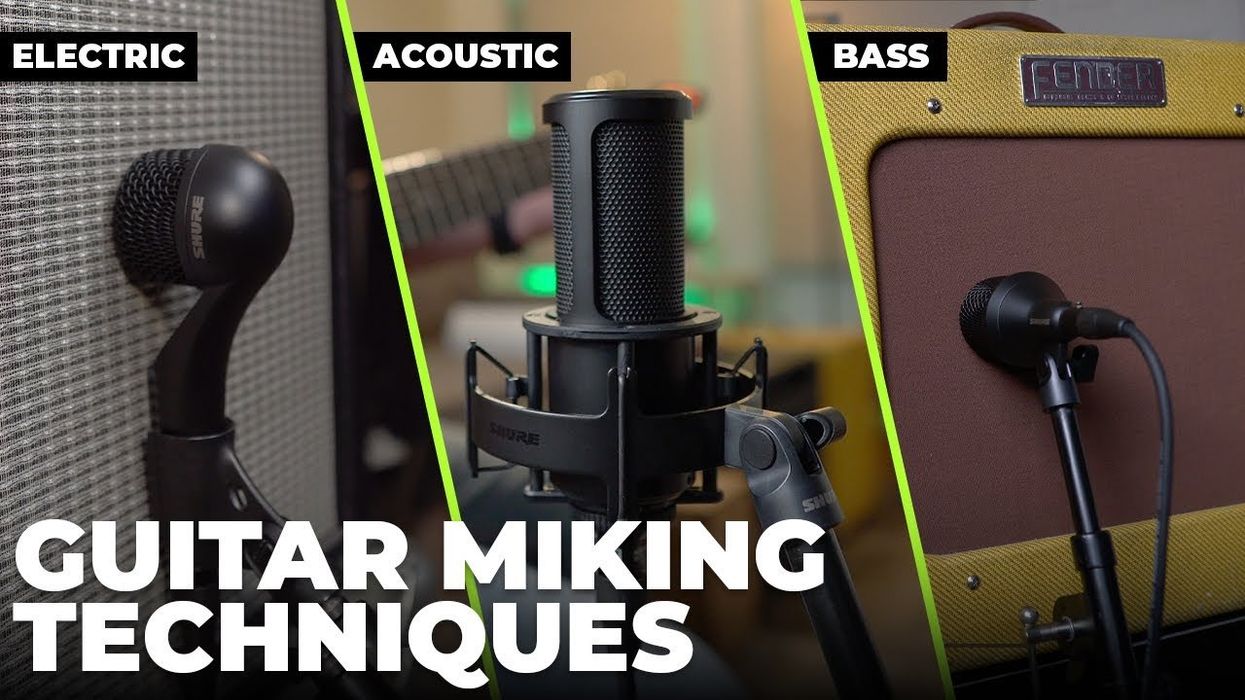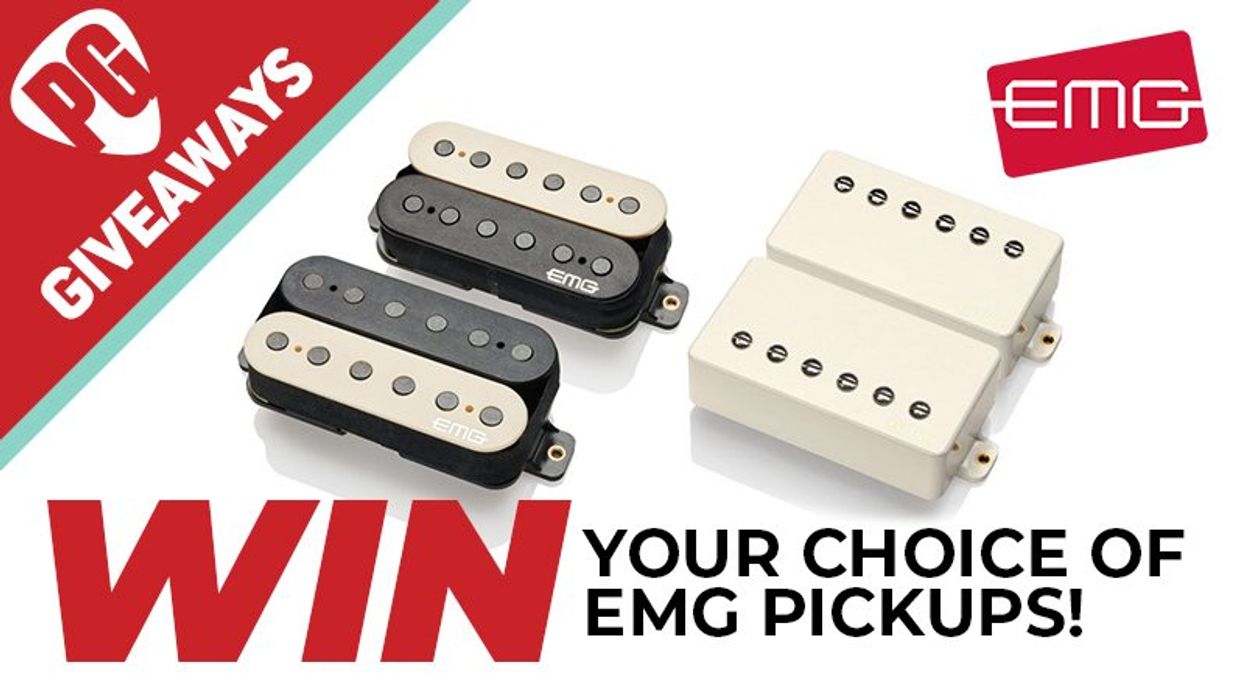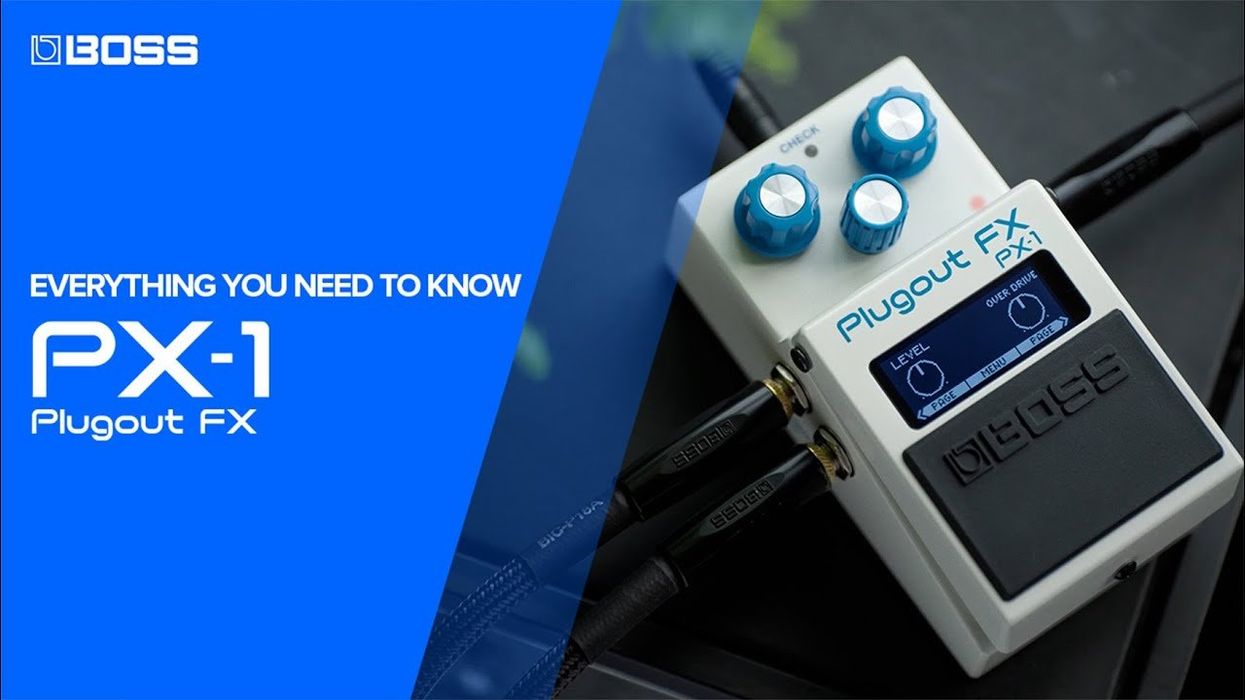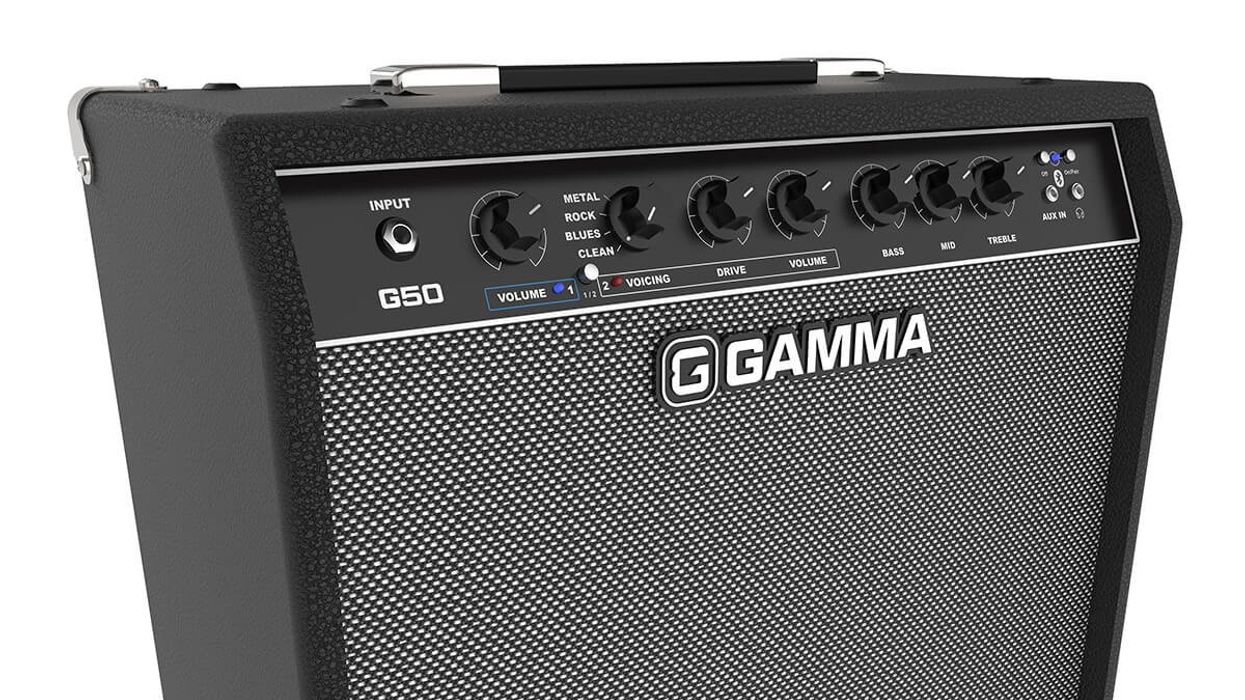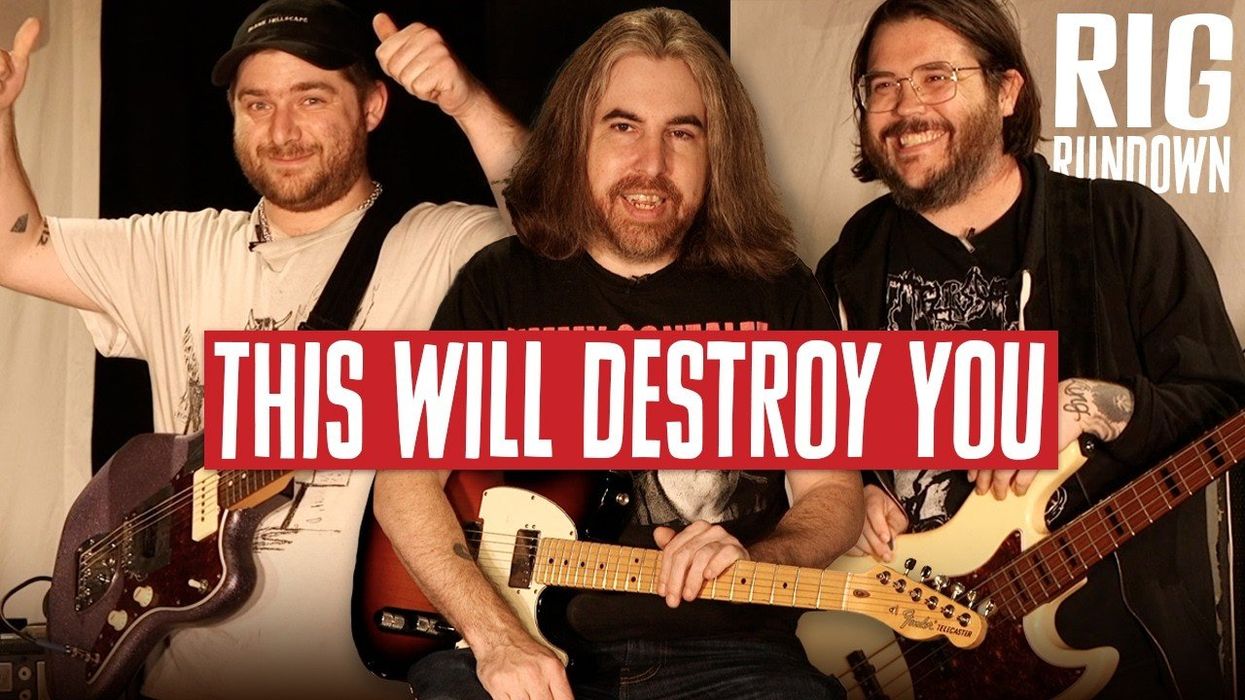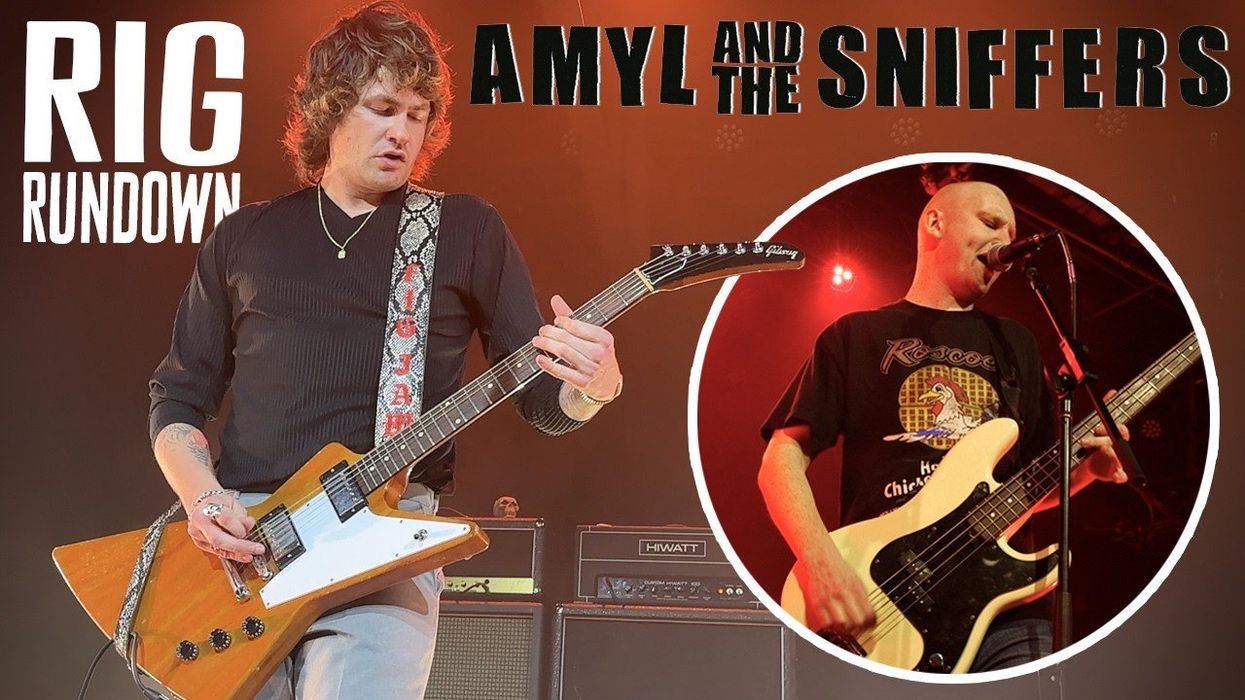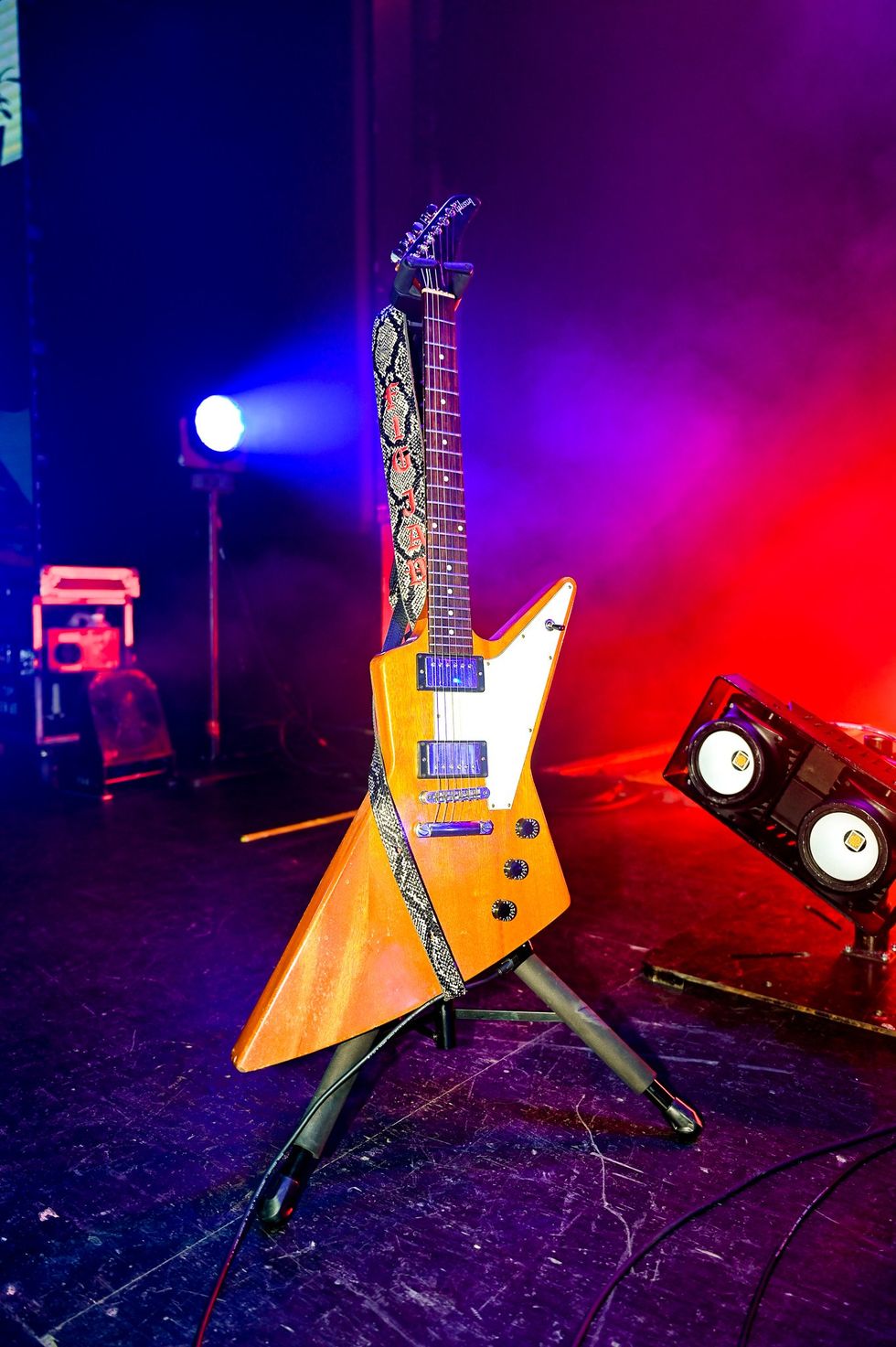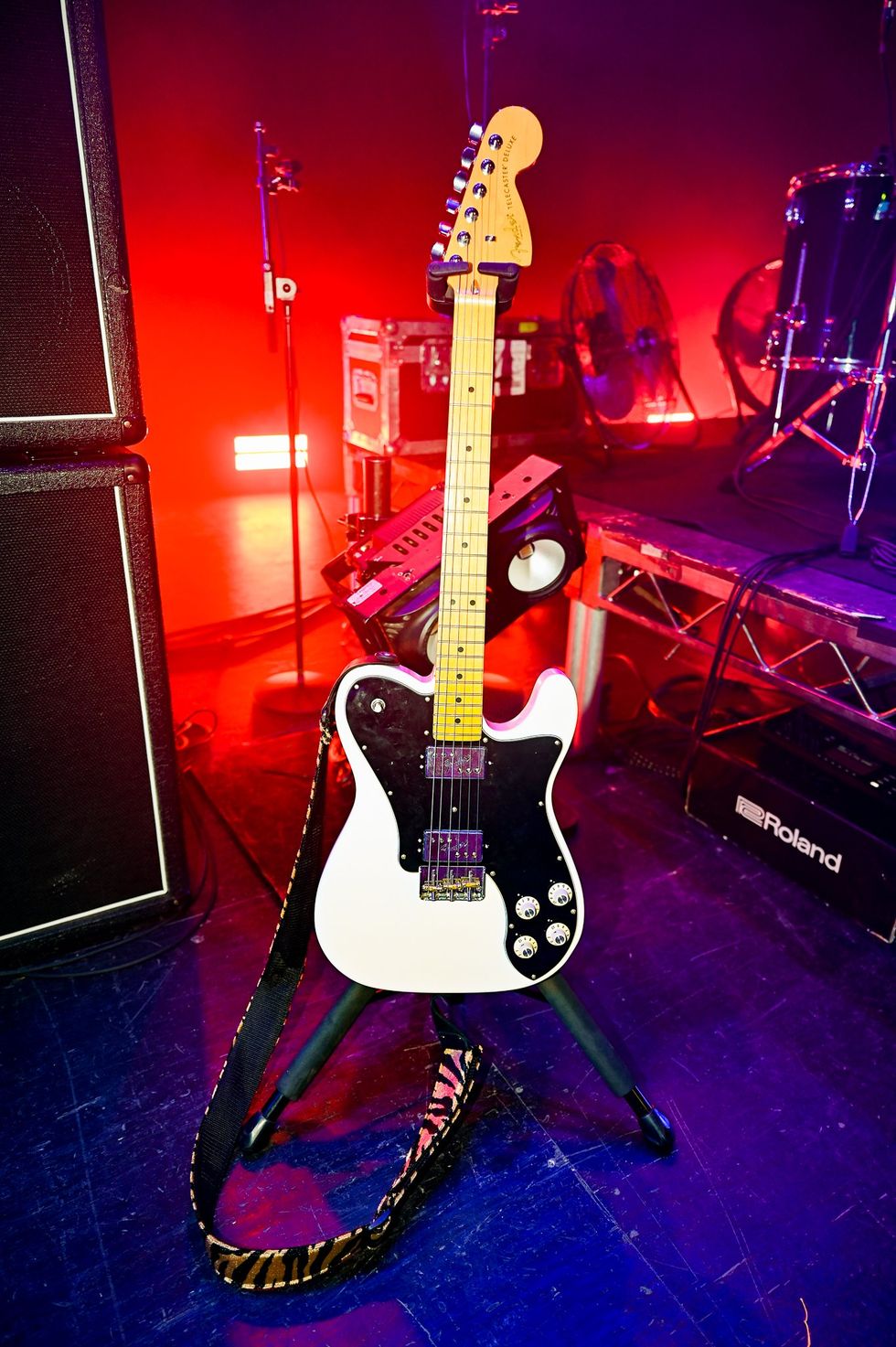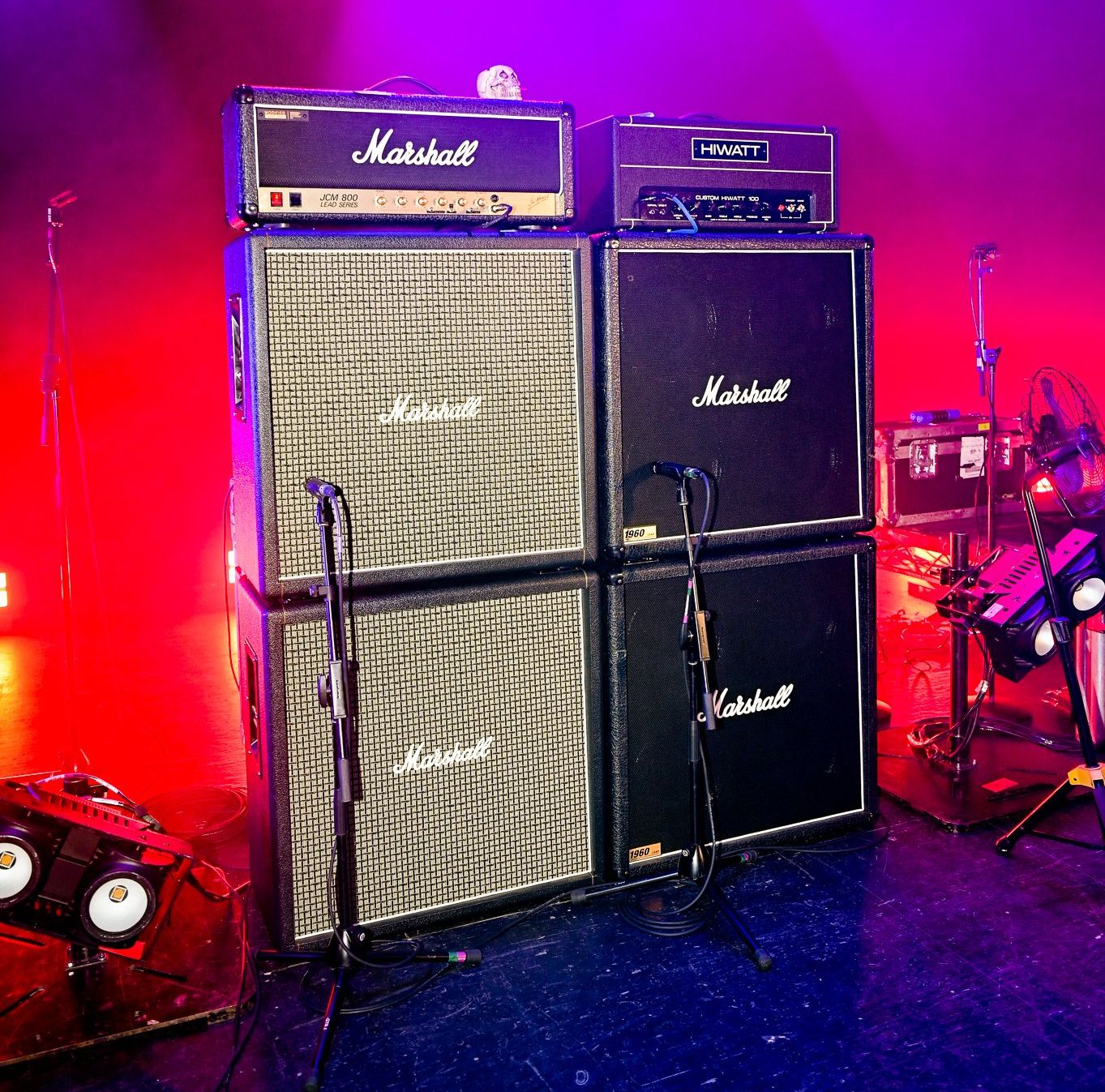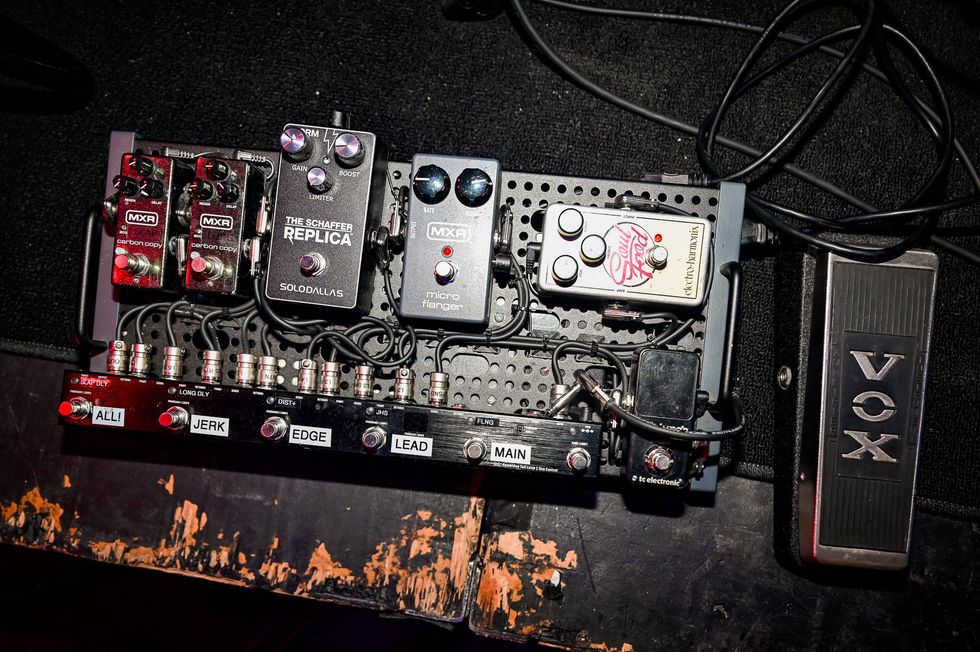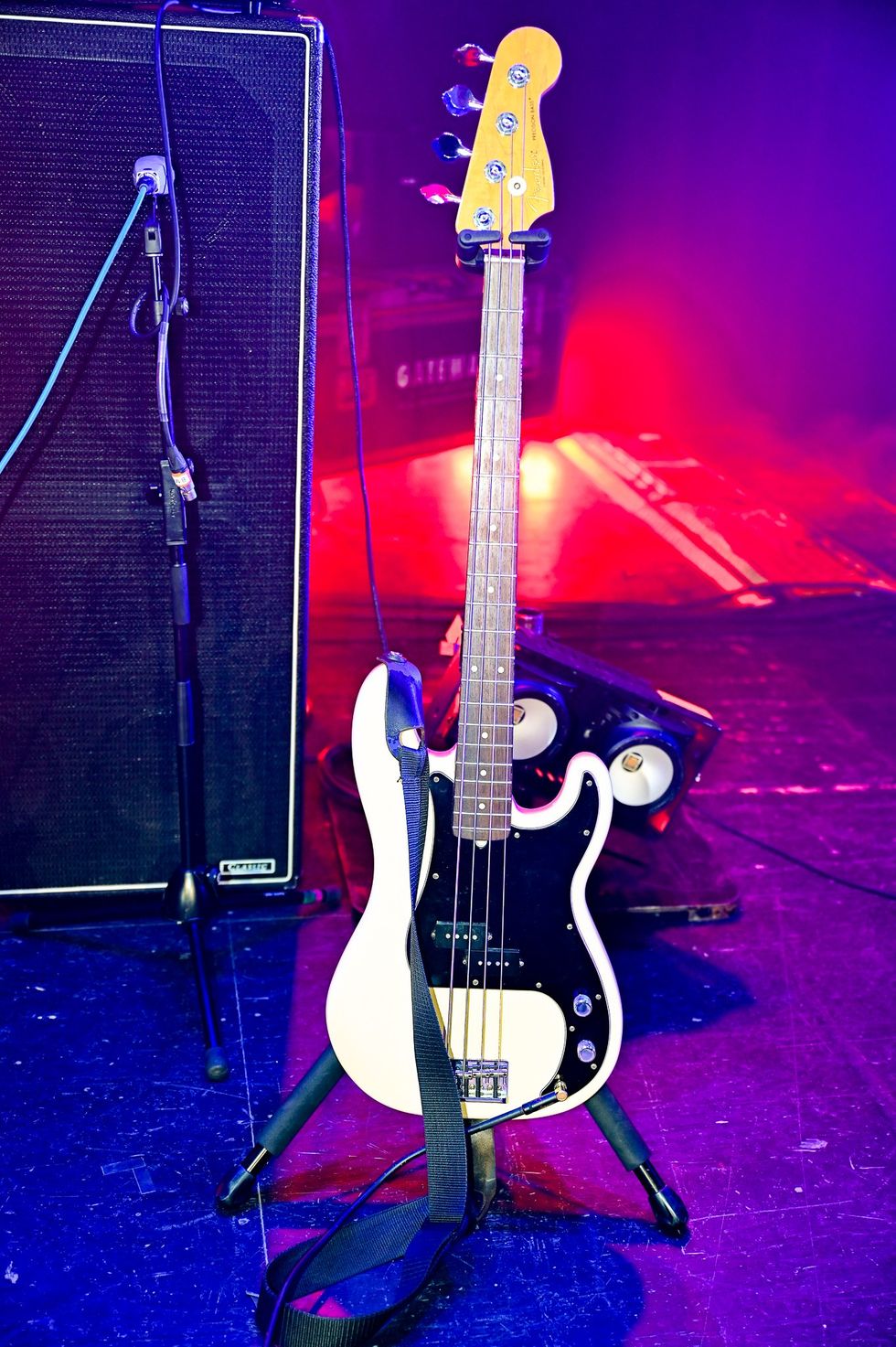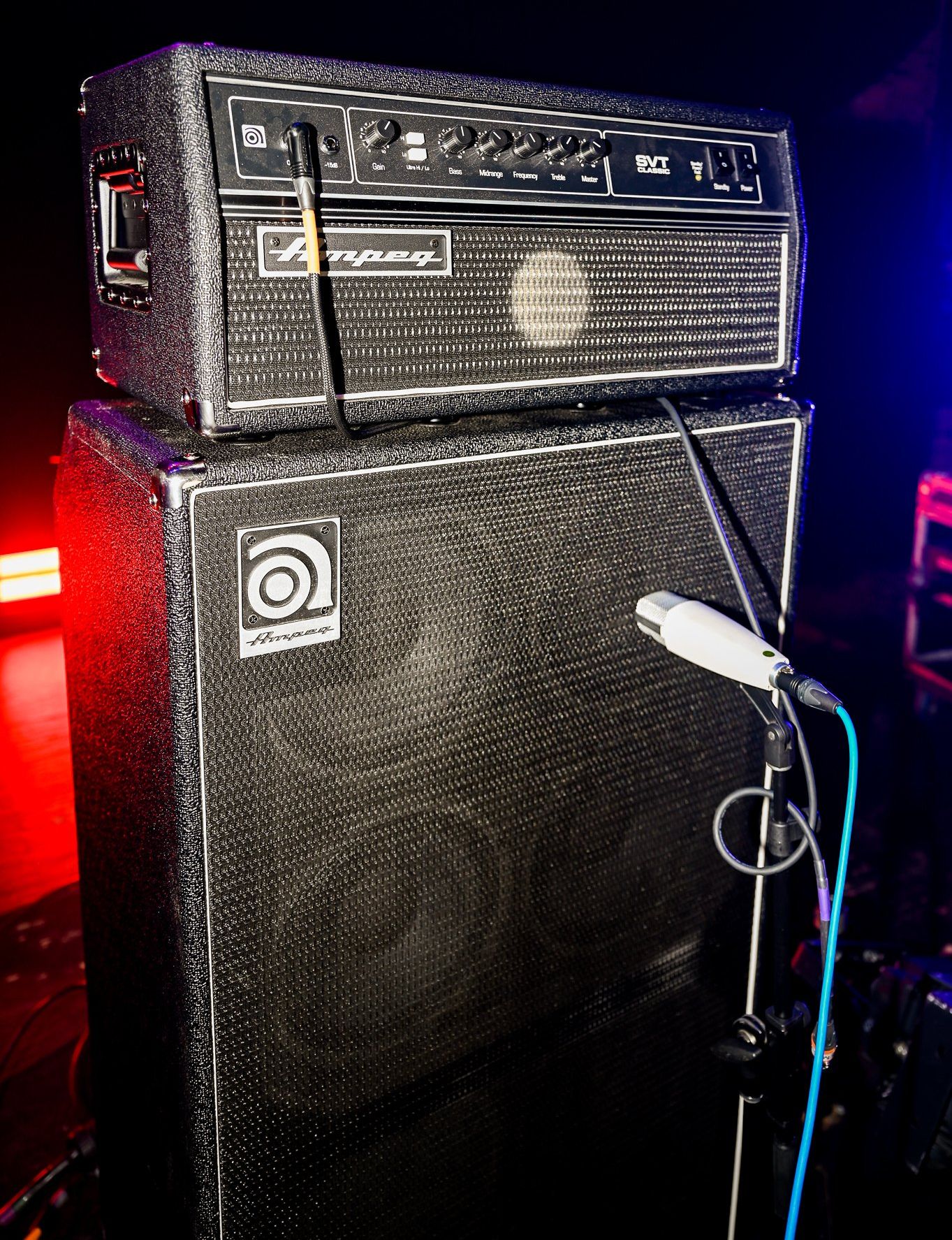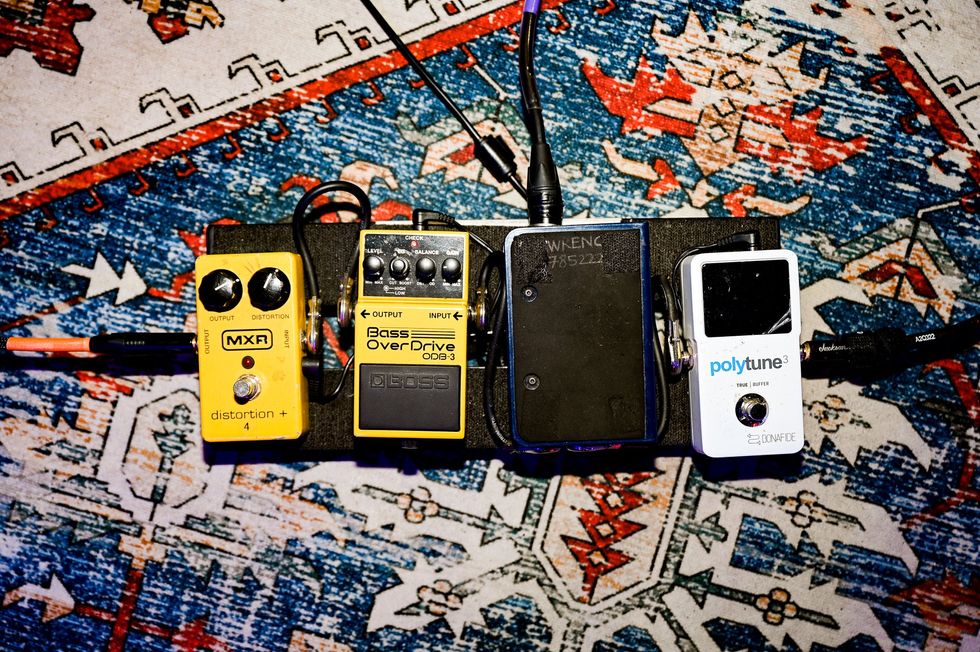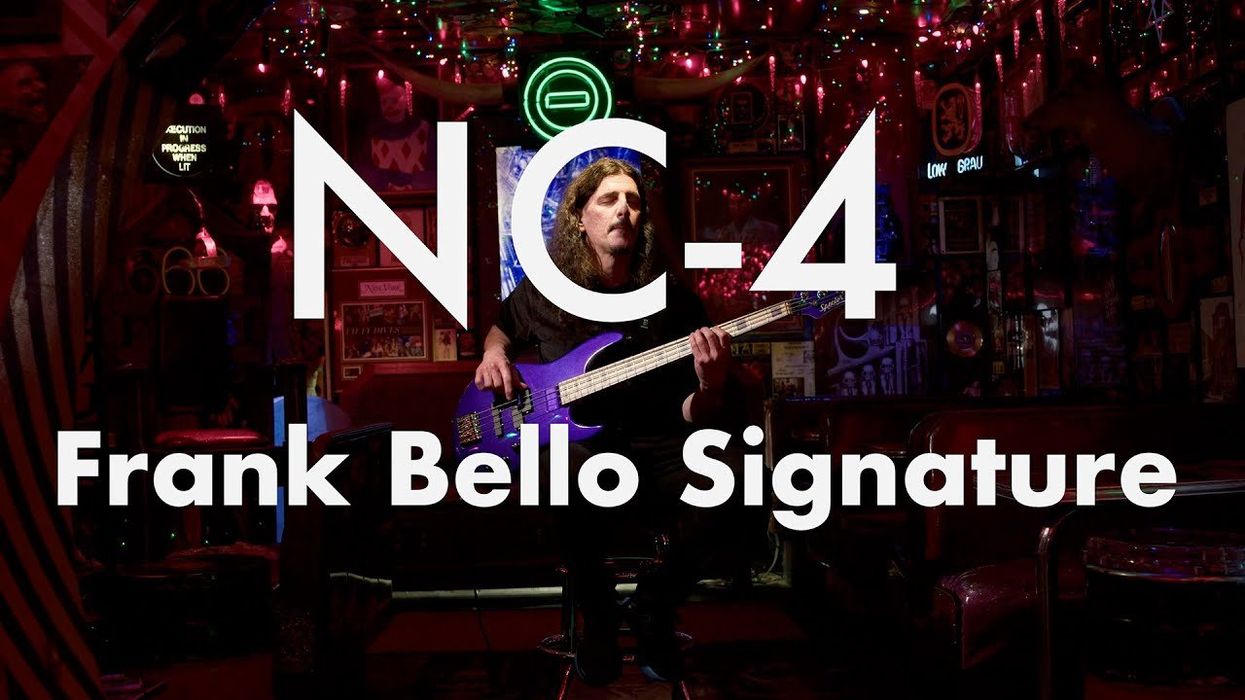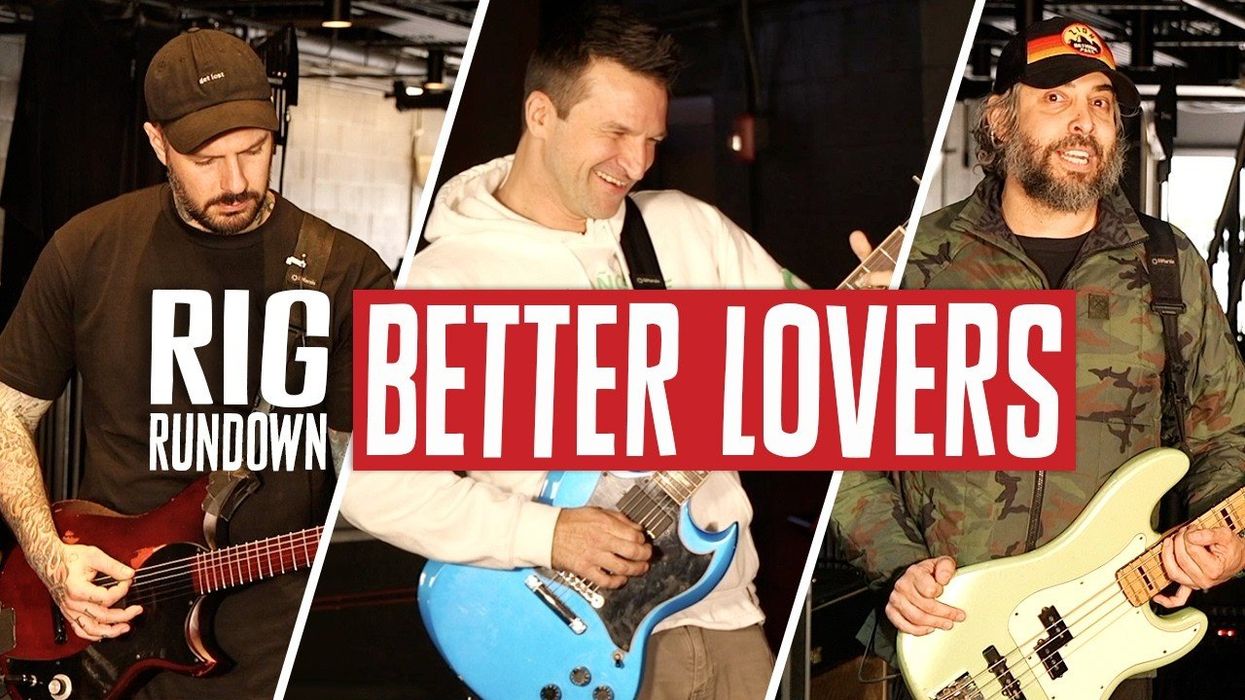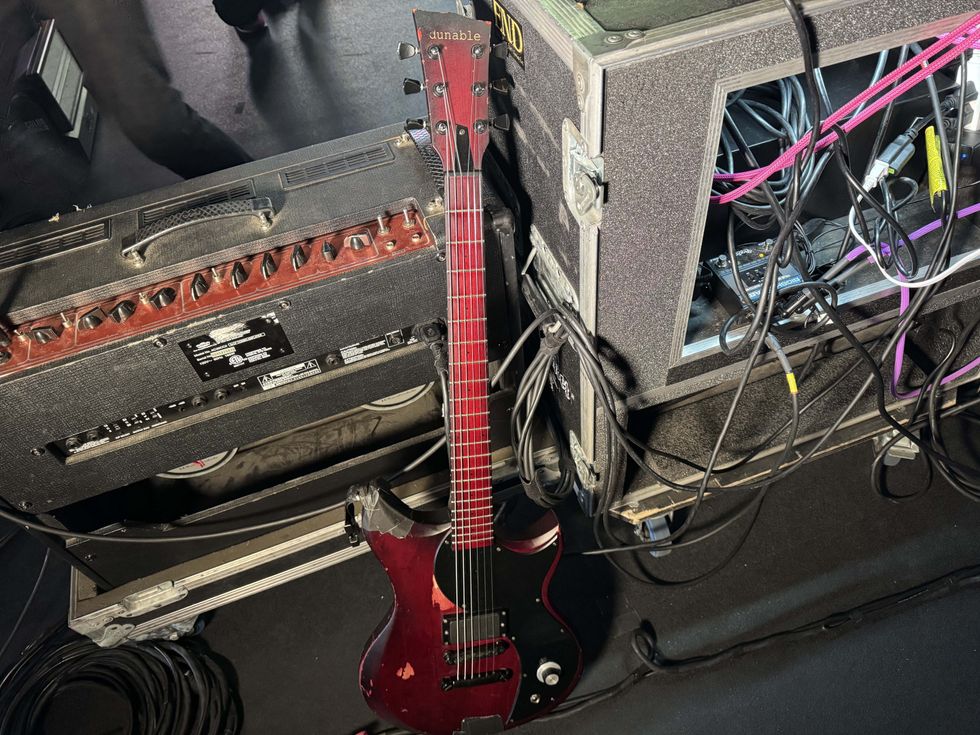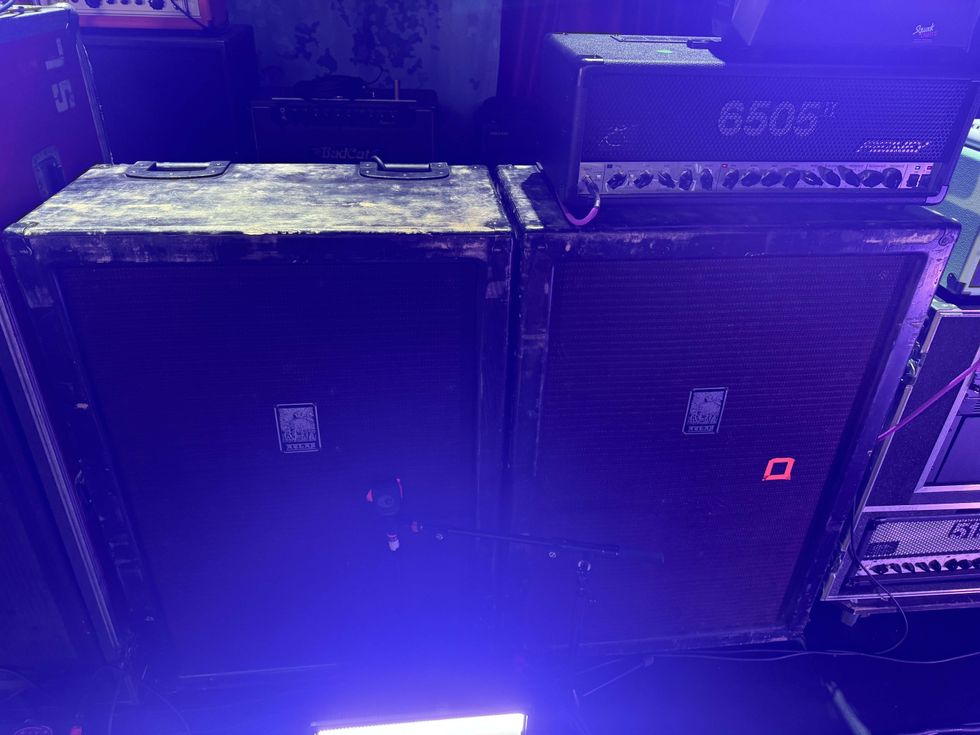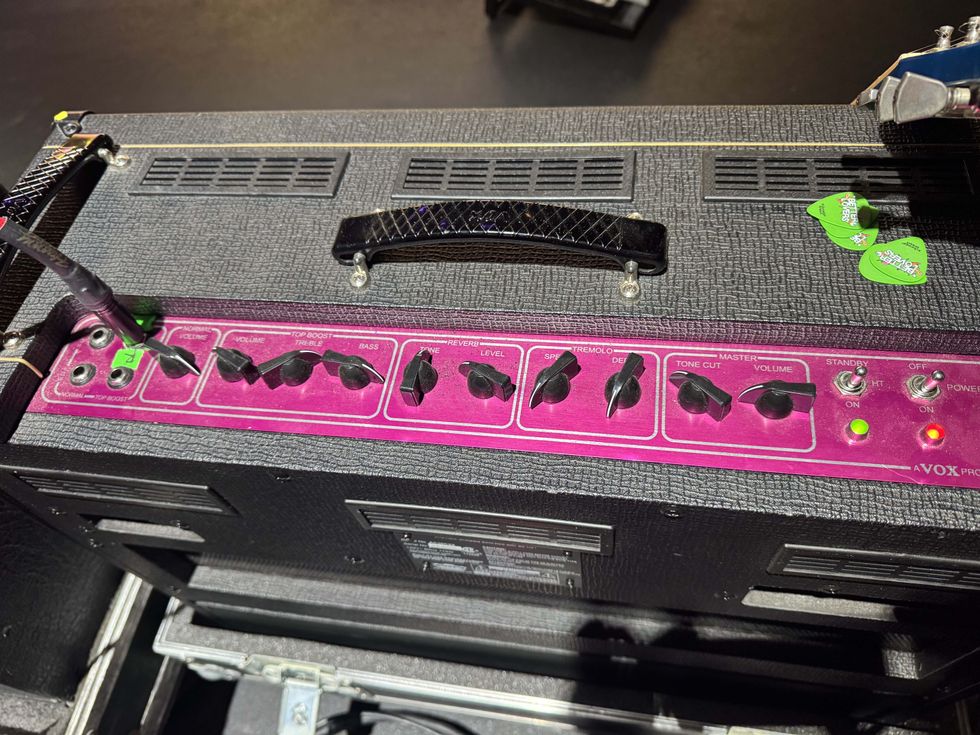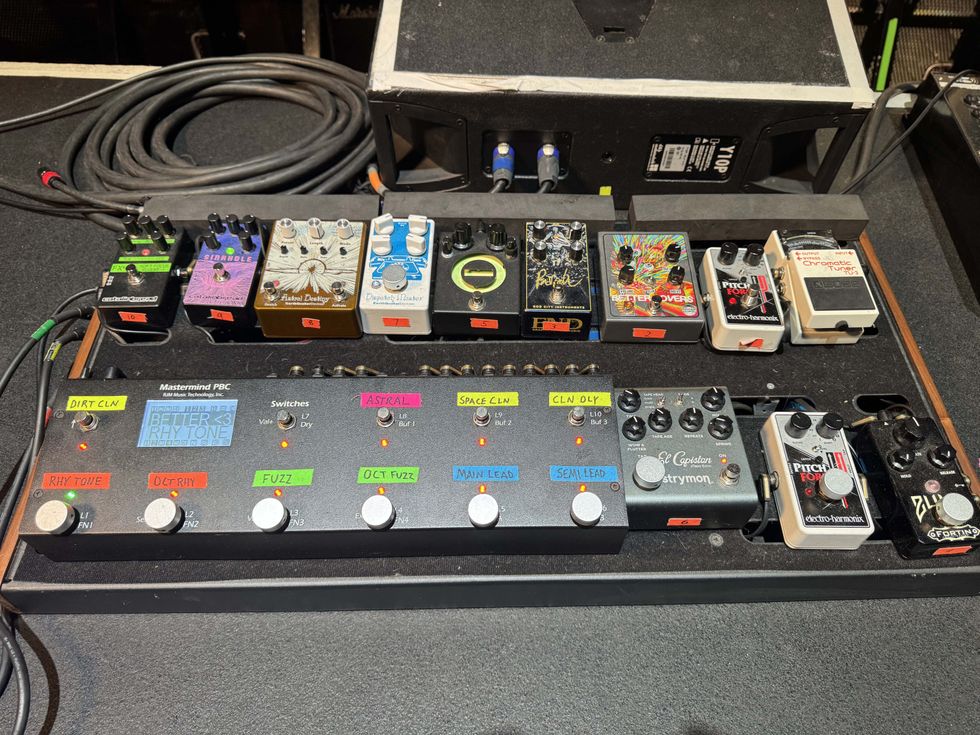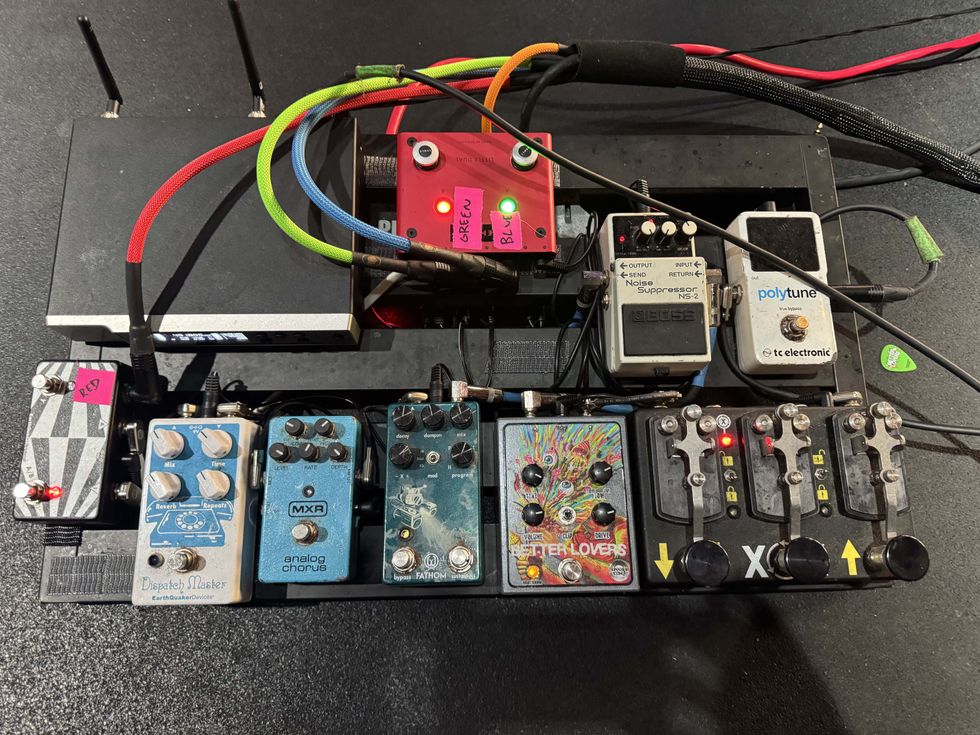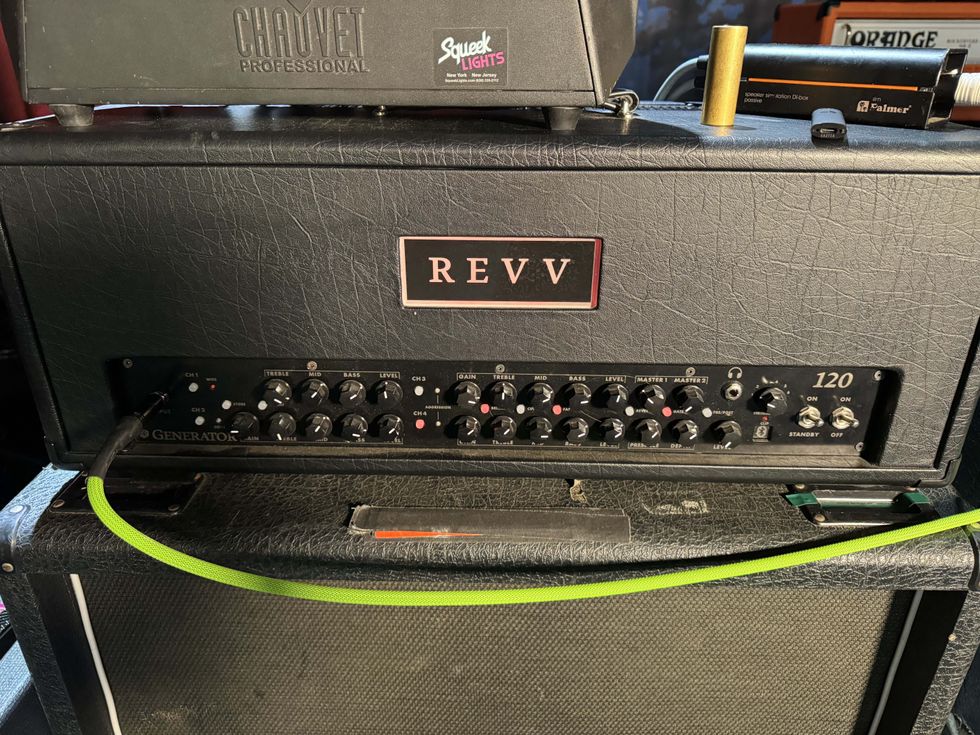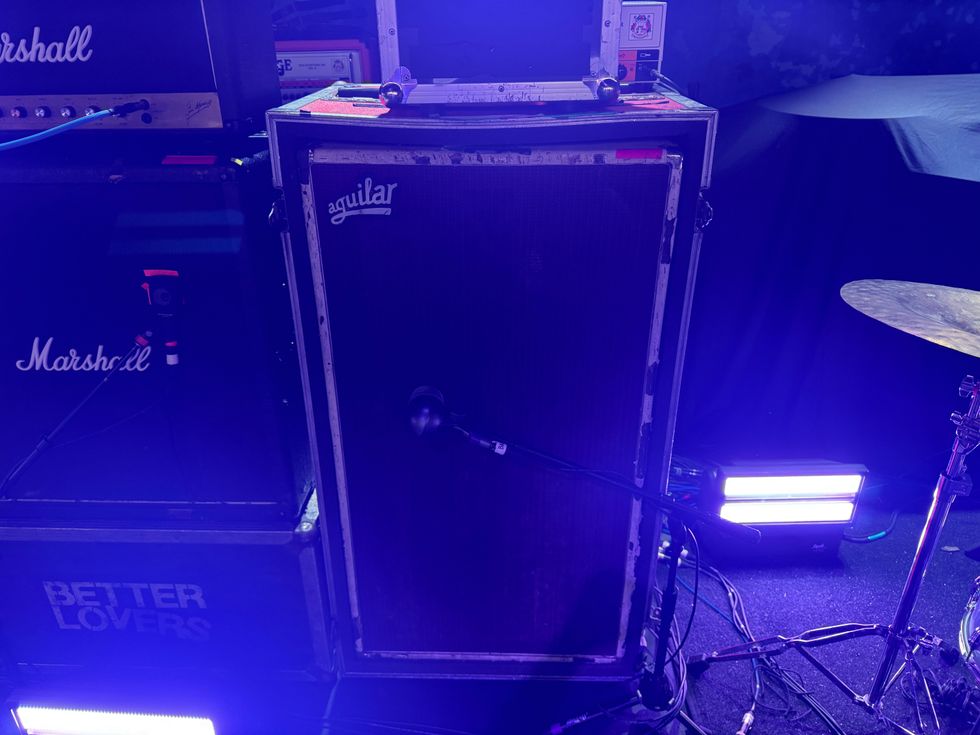LEFT: Providing a big, warm, well-compressed tone with an option for extra distortion, this basic
pedalboard setup covers the needs for 90 percent of my work. RIGHT: For solo-bass performances
and funk gigs, I’ll bring a pair of envelope filters, along with synth-bass, chorus, and octave pedals
to add to the necessities like the preamp/DI and compressor pedals from my basic pedalboard.
A student of mine recently asked me to explain bass pedals, from the basics on up. It’s no secret that almost every guitarist uses pedals as part of their artistic pallet of sonic colors and textures, and for a guitarist to show up at a gig without pedals is almost unfathomable. Bassists, on the other hand, are usually expected to bring only a clean, strong foundation, without any real color beyond the sound of their fingers, bass, and amplifier. I’ve gone through stages as a player where I used pedals for color only when absolutely necessary, and I’ve also gone through stages when the sounds I heard in my head required some effect for the type of gigs I was doing at the time.
Many pedal manufacturers use true bypass as a major selling point, but in my opinion, the richer harmonics of the sub lows of my signal never stay completely unaffected when my pedals are in standby mode. And for me, this is the only major drawback of using pedals. While power buffers and quality patch cables can help minimize this problem, I play bass, not guitar (which exists more in the midrange and is not quite as sensitive to this issue), so I might opt for no pedals at all to keep a pristine tonal path. In fact, the few times my pedalboard has gone down mid-show while out on tour, the FOH engineer confirmed that he got a richer bottom-end when the cable was plugged straight into the amplifier. With all that said, my current local gigs and main touring gig require that I use pedals. And for me, there are necessary pedals, less necessary pedals, and “candy” pedals (the ridiculously fun ones that will get you fired from certain gigs if used too liberally).
The Basic Needs: Preamp/DI,
Compressor, and Tuner
I believe a preamp/DI pedal is an absolute
necessity. Not only will you be familiar with
the DI at the gig since it’s your DI, you also
have the opportunity to warm up the sound
and dial in some overdrive. (Personally, I
use this type of pedal as an amp simulator,
and never really dial up more of the heavily
distorted tones it’s capable of.)
The basic pedalboard for bassists should also house a compressor pedal, since they really help make most basses punchier and more even. Because I play 5-string basses almost exclusively, having a compressor pedal helps that 5th string blend in better with the other four—both in frequency and tone. And finally, a tuner should certainly be part of the basic pedalboard, but because of the tone-deterioration possibility mentioned earlier, I run a parallel line to it instead of running my sound through it.
The Next Step: Secondary
Distortion and Octave Pedals
In addition to a tube-warmth pedal that
stays on my pedalboard permanently
(which I only use for amplifier-type coloration),
I use a separate pedal for a heavier
distortion sound that really pops. I prefer
a very present bite in the high end, though
I’ve noticed that a lot of other bassists try to
avoid this in their distortion settings. This
tone is equally usable for heavy metal and
Larry Graham-type lead-funk tones, and
that’s why it is almost a necessity for me.
When it comes to octave pedals for bass, their use can be heard on many classic records, and they can really make a dramatic statement. During my first years as a professional bassist, I was a 4-string player exclusively, and using an octave pedal enabled me to play the occasional low C or D when needed, and more importantly, allowed me to cover basic synth-like pop tones with a traditional 4-string instrument. While it can be a cool and fun effect for solos, an octave pedal can also be used to propel an entire song and provide you an additional voice as a player—giving you the opportunity for a greater variety of gigs.
The Fun Ones: Envelope
Filters, Chorus, Reverb, and
Synth-Bass Pedals
I have to start this section with a disclaimer: If
you are a funk player exclusively, these pedals
might actually belong in the section for basic
pedals. Since I primarily play pop, rock, soul,
and modern country, these types of pedals are
pure, playhouse candy for me. An auto wah/
envelope filter is a pedal that is as effective
for bass as a traditional wah is for guitar. It
can make a solo or other part really sound
like its own thing by making a stronger sonic
imprint and stronger artistic statement. I
actually have two different envelope filters on
my pedalboard, so I’m able to better replicate
different, classic funk tones. And for stepping
even deeper into funk land, I also employ a
bass-synth pedal for an assortment of wacky
settings for really out-there sounds, or more
traditional, moog-esque synth tones. But I
have to watch out: This pedal can absolutely
blow up a PA if used recklessly.
When playing solo pieces—and ballads in some cases—a good chorus pedal will come in handy by providing higher notes with a gorgeous voice. Using chorus in a band setting also totally works (Duff McKagan on the Appetite for Destruction album and Mark King with the band Level 42 are great examples), but you have to use diligence since it’s possible to make the whole band sound slightly out of tune. And when it comes to reverb pedals, they too can be tremendously useful for bass-solo pieces. I like to really indulge in reverb when I’m performing a solo piece in order to emulate the acoustics of playing in an old cathedral. It inspires me to play fewer notes and helps me use a greater dynamic range.
Choices in pedals are such an individual thing, and my pedalboard is a very personal setup. So if you are just beginning your adventure in bass-pedal exploration, the best starting point is to prioritize from basic to fun based on what’s ideal for you and your style.
 Victor Brodén
Victor BrodénNashville bassist and producer Victor Brodén has toured and recorded with more than 25 major-label artists, including LeAnn Rimes, Richard Marx, Casting Crowns, and Randy Houser. His credits also include Grammy-winning albums and numerous television specials on CMT and GAC, as well as performances on The Tonight Show and The Ellen DeGeneres Show. You can reach him at vbroden@yahoo.com.


